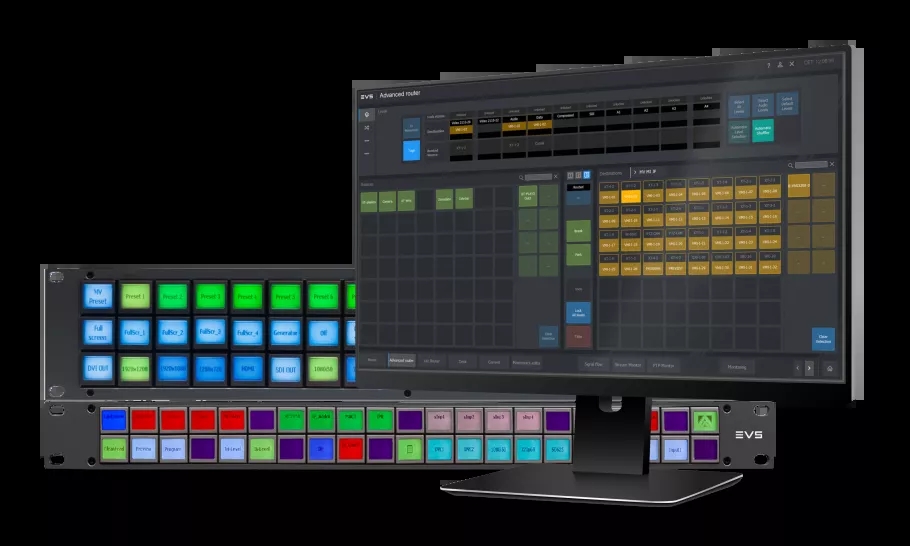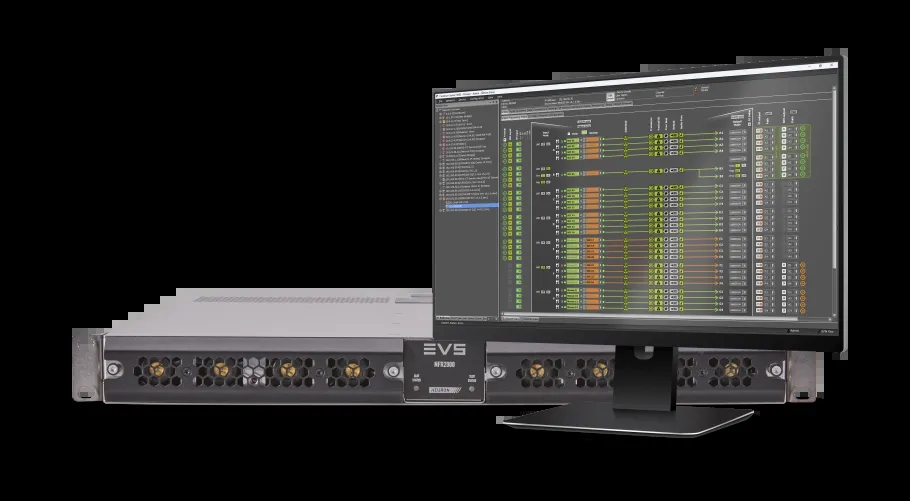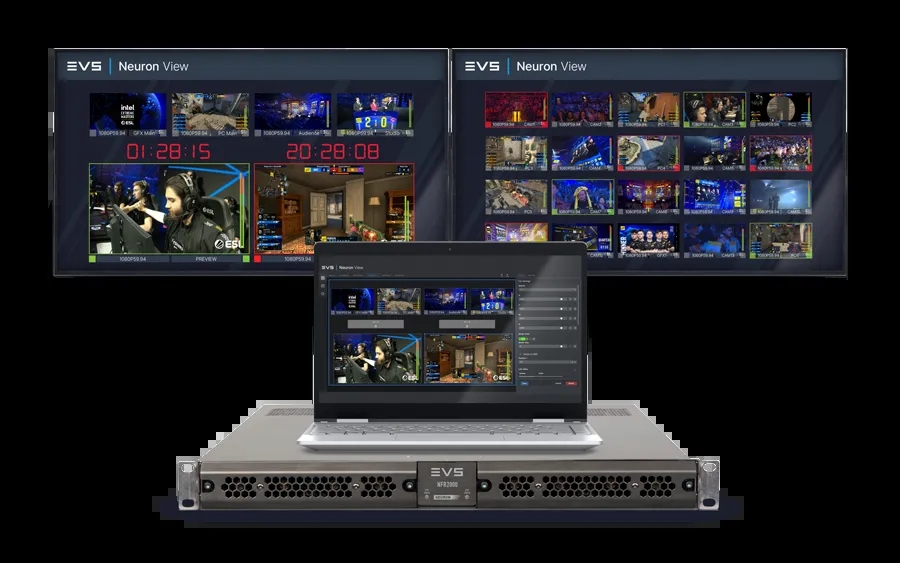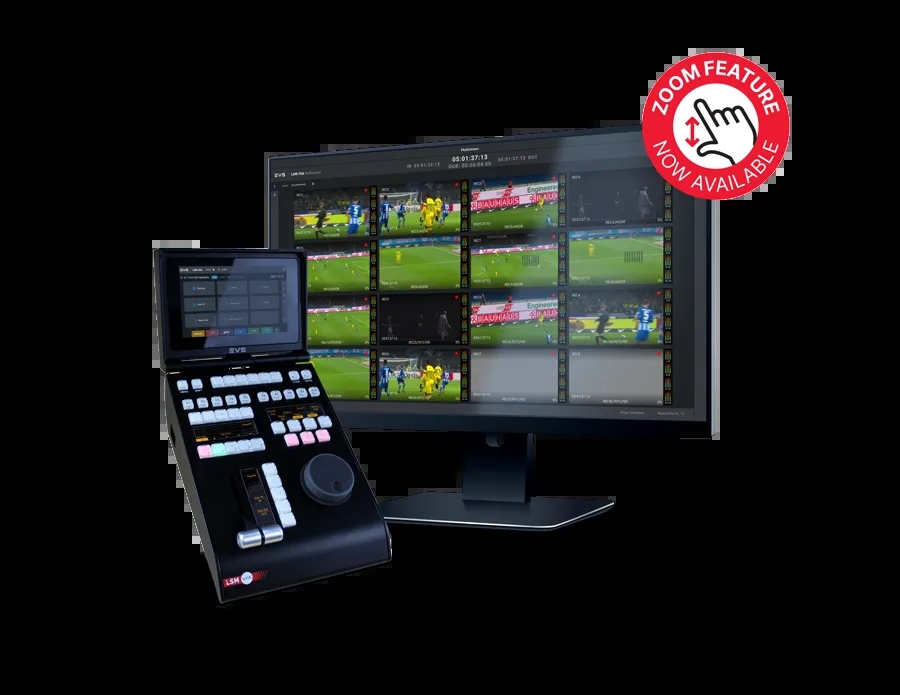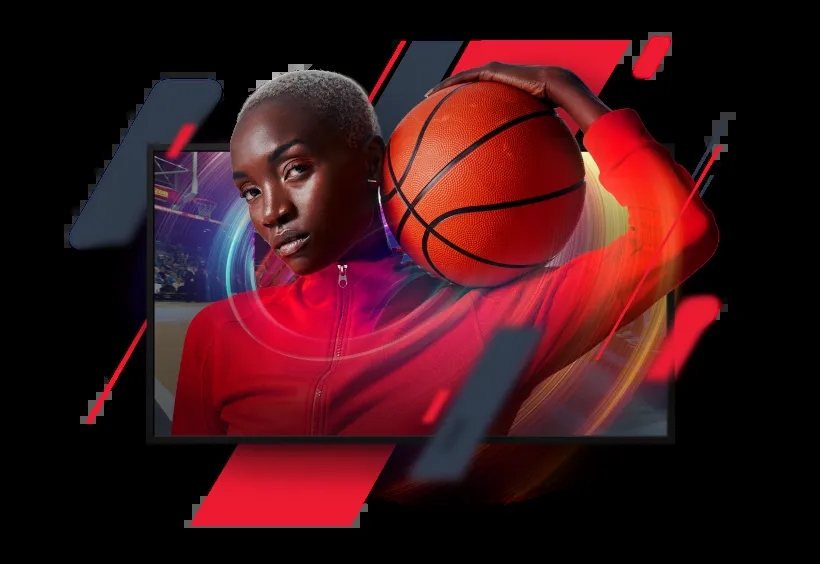Inside Gillette Stadium’s future-ready IP-based production hub
Take a closer look inside Gillette Stadium’s IP-based control hub and see how EVS technology powers the largest outdoor curved videoboard in the U.S., delivering flawless experiences from concerts to kickoff.
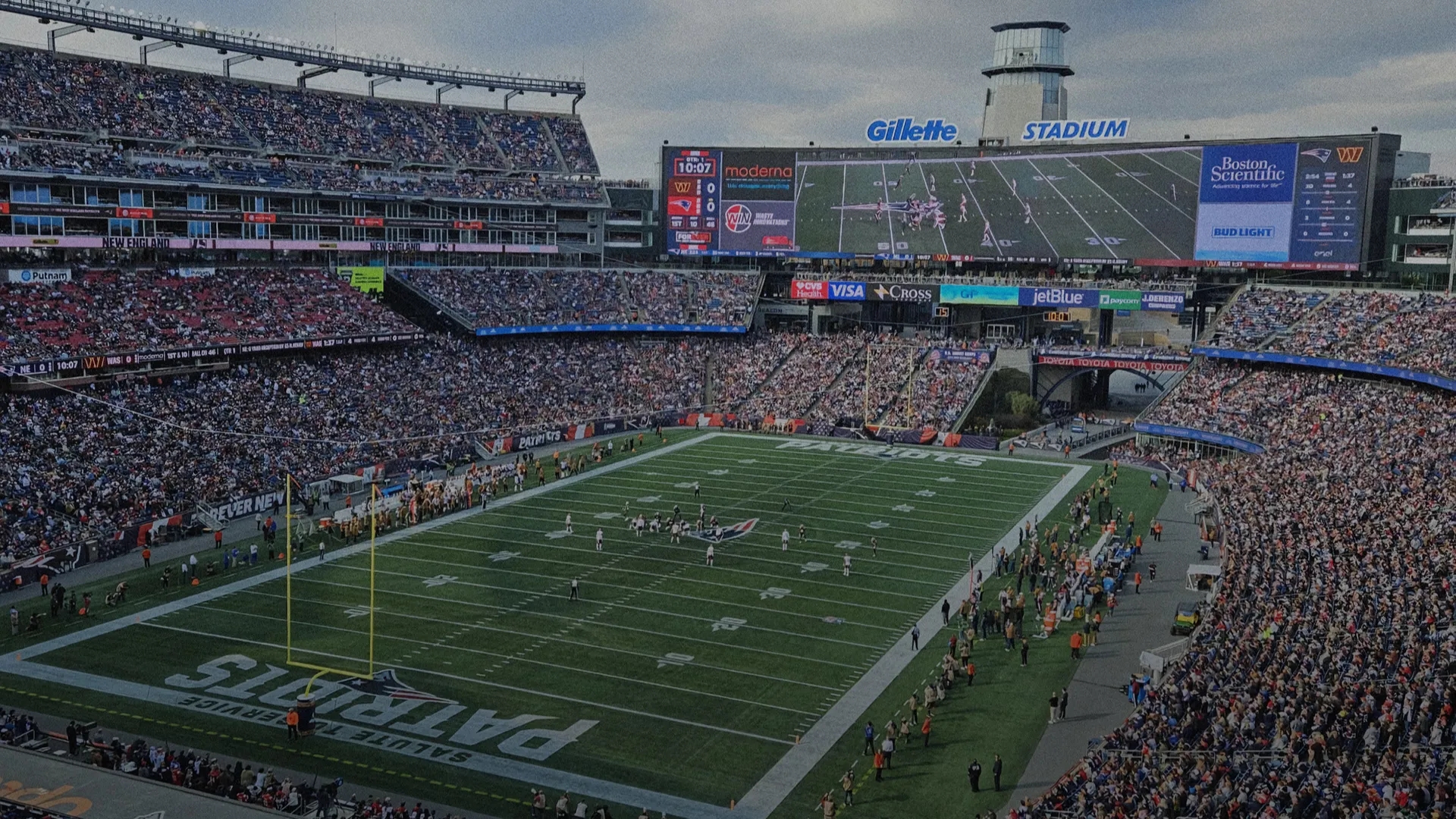
- 09 September 2025
In 2022, Gillette raised the bar with a significant renovation of its North End Zone, introducing the largest outdoor curved videoboard in the U.S.: a 22,200-square-foot LED display featuring over 20 million pixels. To support that screen and meet the growing demands of its events, Gillette moved away from truck-based workflows and built a centralized, IP-based control room, giving the team more control, faster setup, and the flexibility to handle any type of show.
For years, Gillette’s live productions relied on external OB trucks, but as fan expectations grew and technical requirements escalated, especially with the arrival of the massive North End videoboard, the truck model’s limitations became clear.
“There was no continuity from event to event,” recalls Chris Black, Control Room Manager at Gillette Stadium. “The trucks served us well for a time, but they couldn’t keep up with where we were headed.”
Ahead of every event, crews would spend hours loading content, running last-minute tests, and troubleshooting equipment under intense time pressure, sometimes right up until kickoff. Beyond the logistical complexity, the truck model limited opportunities for innovation. Testing graphics or experimenting with formats wasn’t feasible without added cost or risk.
The renovation project became a turning point. The curved 22,200-square-foot Jumbotron needed a steady flow of high-resolution content in real time, with zero room for error. What the team needed was a centralized control room that could serve as a strategic in-house production hub: one that could handle today's demands and scale for the future, with built-in support for experimentation and smoother coordination across events. Just as important, they needed a solid foundation built on IP-based infrastructure that could work with older systems but still move things forward.
Today, Gillette Stadium runs all in-venue productions from a dedicated, full-time control room built inside the stadium. The shift has fundamentally transformed how the team plans, executes, and scales its shows. At the core of this transformation is EVS Cerebrum, the powerful broadcast orchestration and control platform that connects all production elements across the facility.
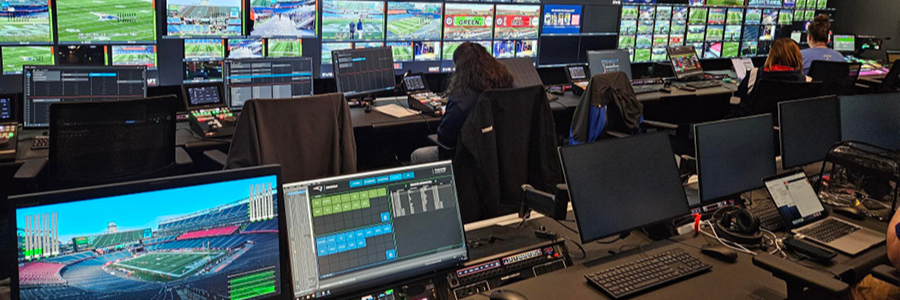
EVS Cerebrum UI in Gillette Stadium control room
Cerebrum serves as the central nervous system of the control room, managing both SDI and IP workflows while streamlining signal routing, multiviewer layouts, device control, salvos, and macros through a single, unified interface.
“We’ve created categories of salvos for each production type,” Chris explains. “Whether it’s a quick adjustment or a full system switch, we can do it in a couple of button presses.”
Cerebrum’s customizable dashboards and control panels allow operators to quickly adapt to different event types, be it an NFL game, MLS match, or concert. The system reduces complexity while enabling repeatable, high-performance workflows across all events. Additionally, the user-friendly design ensures that operators at all experience levels can contribute confidently. Seasoned engineers have full access to advanced features for precision control, while newer team members benefit from simplified UIs that lower the learning curve without compromising output quality.
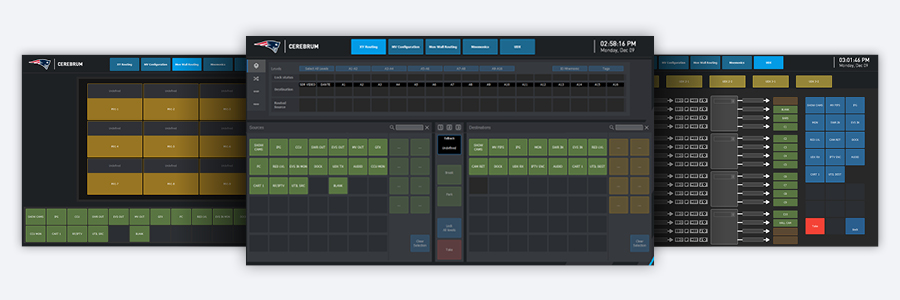
EVS Cerebrum control interfaces
Complementing Cerebrum is EVS Neuron, which forms the IP backbone for all signal processing. With 90% of the facility now running ST 2110, Neuron handles SDI/IP conversion, up/down/cross conversion, frame syncs, audio shuffling, as well as multiviewing. It provides seamless integration between older SDI systems, like the 2006-era studio and production trucks, and the new IP-based control room.
“Neuron is like dropping a slice of an SDI router anywhere we need it,” says Nick Clevenger, Broadcast Systems Engineer at Gillette Stadium. “That kind of flexibility means we didn’t have to redesign the system - it just works, wherever we need it.”
Gillette also uses Neuron View for multiviewing. Adding another layer of flexibility, operators can easily customize layouts to suit different production needs. All of this runs on a Cisco-based IP spine, giving the team high uptime, room to grow, and a clean upgrade path.
Replay operations are central to Gillette’s live experience. The setup includes three EVS XT-VIA servers and five LSM-VIA controllers, providing high-performance replay capabilities while maintaining the familiar EVS interface that operators trust.
“We love how EVS tools offer innovation within a familiar framework,” says Chris. “Freelancers sit down at an LSM remote and feel right at home, but then they start digging in and realize there’s a lot more under the hood to make their job easier.”
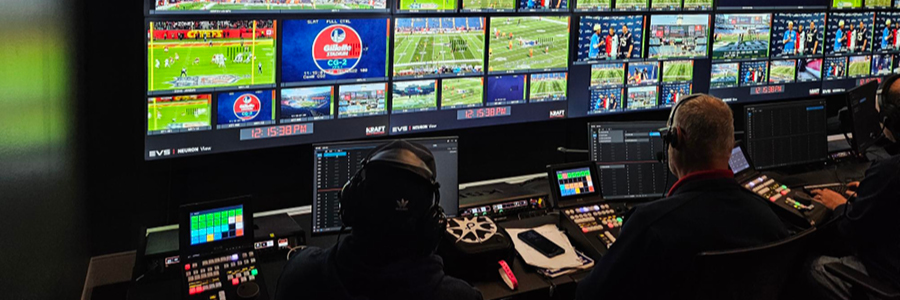
EVS LSM-VIA remote controllers in Gillette Stadium control room
One of the most impactful innovations has been the integration between LSM-VIA and Cerebrum. Replay operators can now trigger routing changes, manage multiviewer presets, and adjust signal paths without leaving their replay panel. It’s a powerful example of how tight integration within the EVS ecosystem simplifies complex tasks and speeds up live operations. By keeping workflows intuitive but enhancing them with powerful features, the new system helps the team execute more efficiently while leaving room for creative exploration.
With the core control room fully operational, the next step is deeper integration with the stadium’s in-house studio located downstairs. The studio currently runs on legacy infrastructure, but a proof of concept is underway to route its live shows through the main control room using Neuron I/O and bi-directional links.
The long-term vision is a unified production ecosystem, where content from any corner of the stadium can be switched, processed, and distributed through one central platform. This would bring the studio into the fold, giving its team access to newer tools, smoother workflows, and better visibility.
“Our goal is a fully unified system where everything, from the studio to the scoreboard, is connected,” says Nick. “We’re building technical and cultural bridges to bring everyone into a modern, shared workflow.”
While the current system already delivers reliability and flexibility, the team sees even greater potential ahead. EVS opens the door to a range of workflow possibilities the Gillette Stadium crew is just beginning to explore, from tighter integrations across the EVS ecosystem to deeper customization through Cerebrum’s extensive capabilities, including advanced control, KVM management, and beyond. More than just a tech vendor, EVS has proven to be a true design partner, working side by side with the engineering team to shape the system’s evolution.
“Cerebrum gives us almost limitless possibilities,” says Chris. “We’re excited to keep building on what we’ve started.”
“When we’re ready to push the system further, EVS is right there with us. They listen, they collaborate, and they help us turn big ideas into real-world solutions,” concludes Nick.
